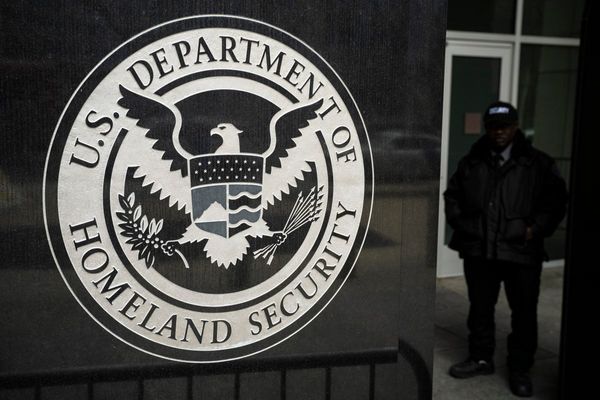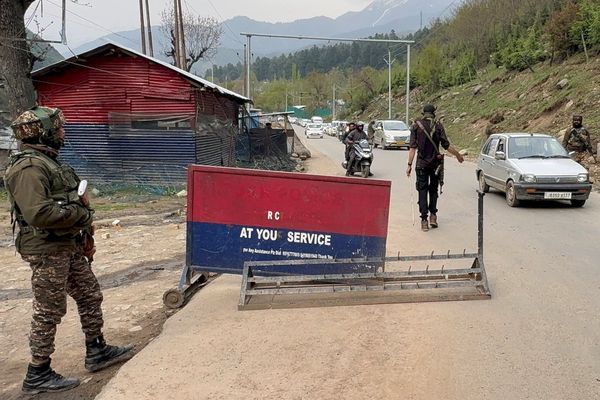COVID-19 has appeared on the radar again, nearly a year and a half after the world relaxed and watched the progress of the virus from a distance. The identification of a sub variant - JN.1 - has sparked fresh interest in the epidemiological world, and has sounded the need for caution. The World Health Organisation, has decided, due to its rapid spread, to classify the variant JN.1 as a separate variant of interest (VOI) from the parent lineage BA.2.86. It was previously classified as VOI as part of BA.2.86 sublineages.
As per WHO’s updated definition of a VOI, it would be a SARS-CoV-2 variant with genetic changes that are predicted or known to affect virus characteristics such as transmissibility, virulence, antibody evasion, susceptibility to therapeutics and detectability. It has also been identified to have a growth advantage over other circulating variants in more than one WHO region with increasing relative prevalence alongside increasing number of cases over time, or other apparent epidemiological impacts to suggest an emerging risk to global public health.
The WHO also says that based on currently available evidence, the additional global public health risk posed by JN.1 is currently evaluated as low. Despite this, with the onset of winter in the Northern Hemisphere, JN.1 could increase the burden of respiratory infections in many countries. Nations would do well to prepare ahead for a possible cascade of respiratory infections, and treat them effectively, preventing severe disease and death.
The WHO added that it would continue to monitor the JN.1 variant and assess the situation, modifying advice as and when required. Maria Van Kerkhove, infectious disease epidemiologist who serves as the technical lead for COVID-19 response at the WHO, earlier explained that JN.1, a sublineage of the BA.2.86 series, is capable of the full spectrum, from asymptomatic disease to severe disease to death, similar to Omicron variants. Some countries have sounded the alert for people to wear masks in crowded and public areas, including Singapore and India. While it was first detected in the United States in September 2023, China detected seven infections of the particular sub-variant on December 15, as per a Reuters report.
The Centers for Disease Control in the US has been tracking this strain since August 2023. In a statement, the CDC said: “The continued growth of JN.1 suggests that it is either more transmissible or better at evading our immune systems. At this time, there is no evidence that JN.1 presents an increased risk to public health relative to other currently circulating variants.” They also added that there was no indication of increased severity from JN.1 at this time.
Significantly, the CDC said that updated COVID-19 vaccines are expected to increase protection against JN.1 as they do for the other variants. “As noted in previous updates, COVID-19 tests and treatments are expected to be effective against JN.1.
Cases in India
In India, things have moved on since the first case of JN.1 was detected in Kerala, earlier this week .Admitting that India has registered a rise in the daily COVID-19 positivity rate in some States, including Kerala, Maharashtra, Jharkhand and Karnataka, the Union Health Ministry on Wednesday, while issuing an alert, said that no clusters had been reported in the new JN.1 variant of the SARS-CoV-2 coronavirus.
“The variant is currently under intense scientific scrutiny but not a cause of immediate concern. All JN.1 cases were found to be mild and all of them have recovered without any complications,” Ministry sources added. NITI Aayog Member (Health) V.K. Paul said that India has detected 21 cases of the JN.1 sub-variant JN.1, and between 91% and 92% of those infected are comfortable with home-based treatment. “19 cases of COVID-19 sub-variant JN.1 have been traced in Goa, and one each in Kerala and Maharashtra. Over the past two weeks, 16 deaths related to COVID-19 were recorded, with many of the deceased having serious co-morbidities,” Dr. Paul added.
The debate is on in India, about whether an additional dose of vaccination is required now to protect against JN.1, but most epidemiologists are agreed that with good coverage (nearly 95 %) of two doses of the vaccine combined with the immunity from natural infections will stand the country in good stead if the JN.1 were to progress from VOI to Variant of Concern.
Evolving pathogens
All viruses, including SARS-CoV-2, change over time. While most changes have little to no impact on the virus’s properties, a few changes can affect the way it spreads, severity of disease, the impact of vaccines, and effectiveness of therapeutic strategies. Meanwhile, in the two years, in several areas diagnostic technology has been enhanced by artificial intelligence, such as X-Rays with AI inputs, to aid in detection. Hopefully, these will be put to battle if such a situation were to arise.
However, some changes may affect the virus’s properties, such as how easily it spreads, the associated disease severity, or the performance of vaccines, therapeutic medicines, diagnostic tools, or other public health and social measures. In June 2020, the WHO Virus Evolution Working Group was established with a specific focus on SARS-CoV-2 variants, their phenotype and their impact on countermeasures. This later became the Technical Advisory Group on SARS-CoV-2 Virus Evolution. In late 2020, the emergence of variants that posed an increased risk to global public health prompted WHO to characterise some as variants of interest (VOIs) and variants of concern (VOCs) in order to prioritise global monitoring and research, and to inform and adjust the COVID-19 response.
A global concern is the availability of good data and models from across the world, proper sequencing of the viruses, with nations mounting intense surveillance. Dr. Van Kherkhov urged countries to mount surveillance, sequence the variants and share information. Sharing of data is of crucial importance, as the last three years of the pandemic showed. The WHO says considerable progress has been made in establishing and strengthening a global system to detect signals of potential VOIs or VOCs and rapidly assess the risk posed by SARS-CoV-2 variants to public health. “It remains critical that these systems are maintained, and data are shared, according to good principles and in a timely fashion, as SARS-CoV-2 continues to circulate at high levels around the world.” The global health body also recommends monitoring the spread of SARS-CoV-2 in animal populations, and chronically infected individuals, which are crucial aspects of the global strategy to reduce the occurrence of mutations that have negative public health implications.
(ramya.kannan@thehindu.co.in)







